


xxxxxThe Italian opera composer Vincenzo Bellini began his meteoric career with his productions of The Sleepwalker and Norma, both in 1831. Full of long, simple melodies and marked by a highly sensitive relationship between music and words, they were designed to show off the skills of the great masters of bel canto (beautiful singing). Another opera with this aim in mind was The Puritans of 1835, but he also wrote songs, symphonies and church music. His works were very popular in his lifetime, and influenced later opera composers, such as Richard Wagner, as well as the music of Franz Liszt and his close friend Frédéric Chopin. But whilst his music was noted for its sustained melodies of exceptional beauty and simplicity, his range of subject was limited, confined in the main to sad and tragic themes. In addition, he did little to develop the part played by the orchestra in the overall production. For these reasons it was his talented contemporary Gaetano Donizetti, together with Gioacchino Rossini, who had the greatest influence upon their country’s next great composer, Giuseppe Verdi. Bellini was only 34 when he died.
VINCENZO BELLINI 1801 -
Acknowledgements
Bellini: by the Italian painter Giuseppe Cammarano (1766-
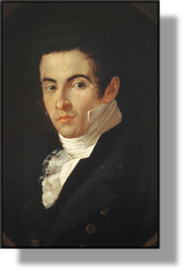 xxxxxThe Italian opera composer Vincenzo Bellini was born in Catania, Sicily, the son of an organist. Sponsored by a Sicilian nobleman, he was able to study at the Conservatory of Music in Naples, and it was there that he met Gaetano Donizetti. He began writing operas while a student -
xxxxxThe Italian opera composer Vincenzo Bellini was born in Catania, Sicily, the son of an organist. Sponsored by a Sicilian nobleman, he was able to study at the Conservatory of Music in Naples, and it was there that he met Gaetano Donizetti. He began writing operas while a student -
xxxxxIn 1833 Bellini went to London for a short while before settling in Paris. Here, on the advice of his countryman Gioacchino Rossini, he wrote The Puritans for the Italian Theatre in Paris. This was produced in 1835 and taken to London later that year. This opera, noted for its fresh, vibrant orchestration, and the beauty of its melodies, proved to be his last. In that year he went to stay with an English friend at Puteaux, near Paris, and it was there that he was taken ill and died, aged 34. A much loved and admired musician, he was buried in the Père Lachaise cemetery, Paris.
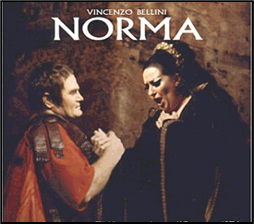
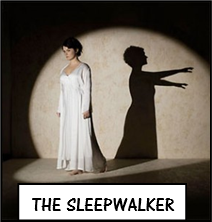 xxxxxBellini composed almost exclusively for the masters of bel canto (beautiful singing), the great singers of the day who sought to control the intensity of vocal tone, together with vocal agility and clear articulation of notes. This called for a highly sensitive relationship between words and music, and sustained melodies of exceptional beauty and simplicity. And whilst he subordinated the orchestral accompaniment to the singing, he nonetheless provided the dramatic element through the purity and eloquence of his music. Not surprisingly, his operas, particularly the later ones, required singers of exceptional talent. The leading roles in both The Sleepwalker and Norma, for example, were extremely demanding for the dramatic soprano. Fortunately there were a number of highly trained and talented singers about at this time, and none more so than the famous tenor Giovanni Battista Rubini.
xxxxxBellini composed almost exclusively for the masters of bel canto (beautiful singing), the great singers of the day who sought to control the intensity of vocal tone, together with vocal agility and clear articulation of notes. This called for a highly sensitive relationship between words and music, and sustained melodies of exceptional beauty and simplicity. And whilst he subordinated the orchestral accompaniment to the singing, he nonetheless provided the dramatic element through the purity and eloquence of his music. Not surprisingly, his operas, particularly the later ones, required singers of exceptional talent. The leading roles in both The Sleepwalker and Norma, for example, were extremely demanding for the dramatic soprano. Fortunately there were a number of highly trained and talented singers about at this time, and none more so than the famous tenor Giovanni Battista Rubini.
xxxxxHis other works included La straniera and Zaira of 1829, and I Capuleti e i Montecchi of 1830, loosely based on Shakespeare’s Romeo and Juliet. He also wrote songs, symphonies and church music. These and his other works had an influence not only on later opera composers, such as Richard Wagner, but also on the music of Franz Liszt and his close friend Frédéric Chopin. However, for the most part, his operas were centred around serious themes, and often had sad or tragic endings. There was very little humour or gaiety in his productions, and this restricted the scope of his appeal. Furthermore, his principal interest was in vocal melody, and he thus gave little attention to improving the orchestral contribution. It is for these reasons, as we shall see, that his contemporary Donizetti, together with Rossini, had a much greater influence upon their country’s next great composer, Giuseppe Verdi.
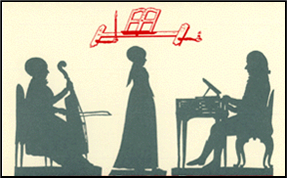 xxxxxAs a well-
xxxxxAs a well-
xxxxxIncidentally, in a letter written in 1834 Bellini had this to say about the composition of an opera: ”Carve in your head by letters of brass: An Opera must draw tears, cause horror, bring death, by means of song.” His certainly achieved that!
Including:
Gaetano Donizetti,
Giacomo Meyerbeer
and Daniel Auber

W4-
xxxxxThe Italian composer Gaetano Donizetti (1797-
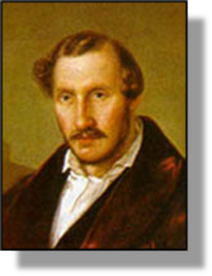 xxxxxThe Italian composer Gaetano Donizetti (1797-
xxxxxThe Italian composer Gaetano Donizetti (1797-
xxxxxDonizetti was born into a poor family in the town of Bergamo in Lombardy, northern Italy. He studied at the music school at Bologna, and his first opera, Enrico di Borgogna, was produced in Venice in 1818. It was a moderate success and certainly encouraged him to write more. Over the next 12 years he composed no less than 30 operas, most of them now forgotten, but in 1830 he gained fame across Europe and, later, North America, with his historical opera Anne Boleyn.
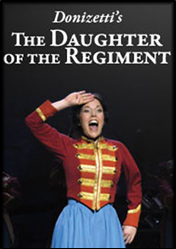
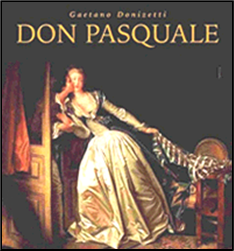 xxxxxDuring the next five years some of his major works followed in quick succession, and in 1837 he was appointed director of the Music School at Naples. However, following the death of his wife, he returned to Paris in 1838. There, due to the early death of Bellini in 1835 and Rossini’s retirement, he found himself without competition. To this period belongs his Daughter of the Regiment, a work which gained immense popularity, The Favourite, his first attempt at French grand opera, and his charming and witty Don Pasquale, an opera which has survived the test of time. From 1845, however, at the height of his success, he developed a brain tumour, and this caused paralysis and the onset of insanity. After some time spent in an asylum outside Paris, he was sent back to his home town of Bergamo, and it was there that he died in 1848.
xxxxxDuring the next five years some of his major works followed in quick succession, and in 1837 he was appointed director of the Music School at Naples. However, following the death of his wife, he returned to Paris in 1838. There, due to the early death of Bellini in 1835 and Rossini’s retirement, he found himself without competition. To this period belongs his Daughter of the Regiment, a work which gained immense popularity, The Favourite, his first attempt at French grand opera, and his charming and witty Don Pasquale, an opera which has survived the test of time. From 1845, however, at the height of his success, he developed a brain tumour, and this caused paralysis and the onset of insanity. After some time spent in an asylum outside Paris, he was sent back to his home town of Bergamo, and it was there that he died in 1848.
xxxxxAs in the case of Bellini, Donizetti’s graceful, smooth flowing melodies gave ample opportunity for the virtuoso singers of bel canto to display their impressive range of voice, and the brilliance of their delivery, but he clearly surpassed his contemporary in the versatility of his compositions. Unlike Bellini his work spanned a wide variety of subjects from the sparkling wit and humour of his comic operas to the weighty emotion and drama of his tragedies. Furthermore, by involving the orchestra more in the overall production, he had a greater influence upon the next operatic master, Giuseppe Verdi.
xxxxxDonizetti’s prolific output also included chamber music, symphonies and a vast amount of sacred music, including a requiem on the death of Bellini in 1845. However, his first love was the theatre. His operas in particular were extremely popular in his lifetime, and continued to be so until overshadowed by those of Verdi and Wagner later in the century. His works gained something of a revival in the 1950s.
xxxxxIncidentally, Donizetti never really recovered from the death of his wife in 1838, soon after the stillbirth of a son. And this tragedy was compounded by the fact that his two earlier children had not survived childbirth. ……
xxxxx…… An unknown Donizetti opera was discovered in London in 1984. Entitled Elizabeth and composed sometime in the early 1840s, it is thought that it was an adaptation, in part at least, of an earlier unpublished work called Eight Months in Two Hours, written in 1827.
xxxxxThe German composer Giacomo Meyerbeer (1791-
xxxxxIt was in Paris in the year 1831 that the German Jewish composer Giacomo Meyerbeer (1791-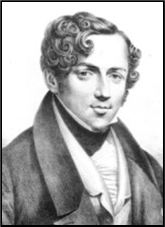 opera and gained him recognition throughout Europe. In the 1850s, towards the end of his career, he adopted a less dramatic style, producing L’Étoile du nord and Le Pardon de Ploermel in the tradition of the opéra comique.
opera and gained him recognition throughout Europe. In the 1850s, towards the end of his career, he adopted a less dramatic style, producing L’Étoile du nord and Le Pardon de Ploermel in the tradition of the opéra comique.
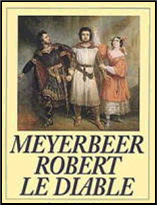
xxxxxHe returned to Berlin for a few years in 1842, where he was appointed musical director of the city’s Royal Opera, and promoted the production of Richard Wagner’s Flying Dutchman. The first great exponent of grand opera, his lavish work influenced both Wagner and Hector Berlioz, and elements of his spectacular productions can be seen in Guiseppe Verdi’s Don Carlos and Giacomo Puccini’s unfinished work Turandot.
xxxxxIncidentally, before moving to Paris in 1826 Meyerbeer worked for some years in Italy, where he composed five operas in the melodious style of Rossini. There, his most successful work was Il crociato of 1824. ……
xxxxx…… In 1851 he represented German music at the Great Exhibition held in London, and he composed an overture -
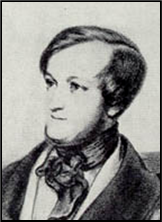 xxxxx…… Meyerbeer met the struggling young composer Richard Wagner (illustrated) in 1839, and helped him by promoting his first two operas, and assisting him financially. Ten years later, however, due to envy, anti-
xxxxx…… Meyerbeer met the struggling young composer Richard Wagner (illustrated) in 1839, and helped him by promoting his first two operas, and assisting him financially. Ten years later, however, due to envy, anti-
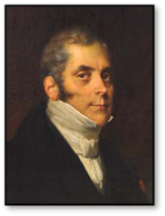
xxxxxAnotherxoperatic composer at this time was the 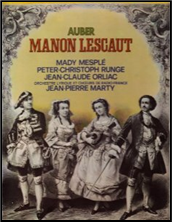 Frenchman Daniel Auber (1782-
Frenchman Daniel Auber (1782-


